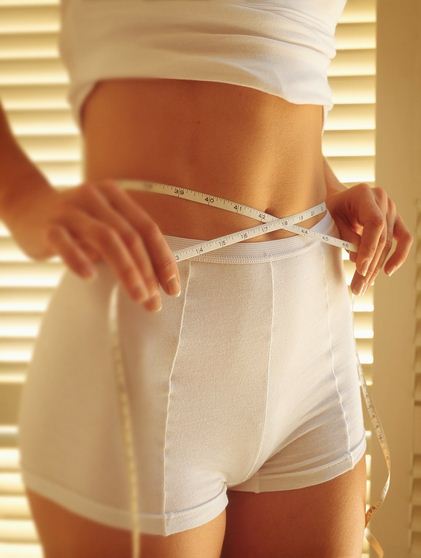Computer-generated images,
counterfeit handbags, surgically-enhanced anatomy... the world has gone
fake-crazy. But when is playing pretend a harmless way to get ahead, and when
is it a health hazard?
How do you know what's real, and what's
fake, in today's super- sophisticated world? Those actors on screen look like
they're in love, but in reality then can't stand each other (ahem Melissa
George and Dieter Brummer, during their Home and Away years); Kim Kardashian's
curves and luscious locks look real, but owe more to padding and extensions
than superior genes. So when is faking it okay, and when can it damage your
health?
Baby's got blue eyes or does she?
Who hasn't wondered how they'd look with
some baby blues, or deep, chocolate brown eyes? Maybe you've toyed with the
thought of zebra-patterned peepers? But crazy colored contact lenses, which are
sold freely in gift stores in Victoria and are readily available online, may
injure your eyes, according to the Optometry Board of Australia. "Contact
lenses, coming in direct contact with the eye, present special dangers,"
says the OBA. "Inappropriately prescribed or dispensed contact lenses and
poor compliance with cleaning and wearing instructions can result in injury to
the eye and infections with serious consequences." And leave swapsies for
skirts and handbags; sharing lens can increase the risk of passing on
infections.

Who
hasn't wondered how they'd look with some baby blues, or deep, chocolate brown eyes?
Fake it work: "When looking to
purchase colored contact lenses always get your eyes checked by an optometrist
first to see if your eyes are in good health and if you are able to wear
contact lenses," says Grant Fisher, national eye care director at OPSM.
"When buying colored contact lenses make sure you go to a reputable
retailer to purchase these to ensure they meet Australian standards, are of
good quality, and that they are professionally fitted for optimal vision,
health and lasting wear."
Sorry, I thought you were Penelope Cruz
Around 8,000 women a year visit a plastic
surgeon for breast augmentation, with 50 per cent of these aged between 18 to
25. However, like any surgery, things can go awry, so it's important to take
advice from the experts. "When visiting a surgeon always ask the three P's
of plastic surgery," says Dr. Scott Ingram, a plastic and reconstructive
surgeon, owner of Brisbane's Form and Function Clinic, and president of the
Australasian Society of Aesthetic Plastic Surgeons. Practitioner, product and
place are your pre-surgery questions. "Check the credentials of the
surgeon and ensure they are a specialist plastic surgeon." This means they
have completed eight to 10 years' training in plastic surgery after obtaining
their medical degree. Many patients don't know that, in Australia, any doctor
may legally perform surgery without being trained in surgery or holding
specialist recognition as a surgeon. You need to ask specifically if your
'surgeon' is a specialist plastic surgeon and a fellow of the Royal Australian
College of Surgeons (FRACS). In terms of risks, the most common complication
following breast augmentation surgery is capsular contracture, or 'implant
hardening'. The condition occurs when the fibrous capsule that normally surrounds
a breast implant tightens and/or thickens, causing excessive firmness and,
sometimes, distortion of the breast shape. "Approximately two per cent of
breast augmentation patients we see have this, depending on the surgeon,
implant and placement," Dr Ingram says. "Ensure you find out the type
and brand of implants and only choose implants with appropriate approval and
testing and ensure they have a proven track record." Minor risks include
wound infection and adverse scarring, but the incidence rate is only one to two
per cent.

Around
8,000 women a year visit a plastic surgeon for breast augmentation, with 50 per
cent of these aged between 18 to 25.
Fake it work: Dr. Ingram insists breast
augmentation is safe, but he doesn't perform it lightly. "If I ever see a
woman who can achieve all they want from a push-up bra, I will tell them to buy
the push-up bra."
Five eleven in flats
Standing up straight won't make you taller,
but it will make you appear that way. In fact, good posture can make you look around
5kg thinner. But how can you look and appear thinner, all day, every day?
Fake it work: Physiotherapist Jason Smith,
founder of Back In Motion Health Group and author of Get Yourself Back In
Motion, says: "The body's core musculature is our powerhouse. Clinical
Pilates switches on the 'core stabilizers’ by strengthening and mobilizing the
muscles in charge of supporting the spine and improving posture so we can walk
taller, function better and look great" As your postural control improves,
your alignment and body awareness develops and the 'scaffolding' of your body
is enhanced. "An easy and effective home exercise is to the on your back
and slowly lift alternate legs in the air to 45 degrees without touching the
floor.

An
easy and effective home exercise is to the on your back and slowly lift
alternate legs in the air to 45 degrees without touching the floor.
"Concentrate on tightening your
abdominals and not letting your lower back arch," Smith advises. "You
should feel your pelvic and core muscles switch on."